We may earn commissions when you buy from links on our site. Why you can trust us.
TCL Q7 QLED TV Boasts Top-Flight Picture Performance Under $1,000
Everyone loves a bargain, so it's no surprise that shoppers have had something of a love affair with TCL for years. The relationship promises to continue with the company's latest 65-inch Q Class Q7 Smart TV, a bright and brawny quantum dot LCD TV that improves yet again on the previous generation.
The 4K TCL Q Class Q7 QLED 65Q750G has a list price of $999.99 (currently on sale for $699.99), and yet it boasts top-flight picture performance – not to mention a full set of premium features and options. Based on Google TV's software, it's a flexible smart TV supporting nearly every streaming app and service available. It also works with voice commands from Amazon's Alexa (and Google Assistant, of course). The screen itself uses a quantum dot layer to expand its range of displayable colors and full-array local dimming to improve contrast and brightness. The Q7 also boasts some of the more advanced picture modes, such as Dolby Vision IQ and Imax Enhanced, that some more expensive sets, such as models from Samsung, do not include.
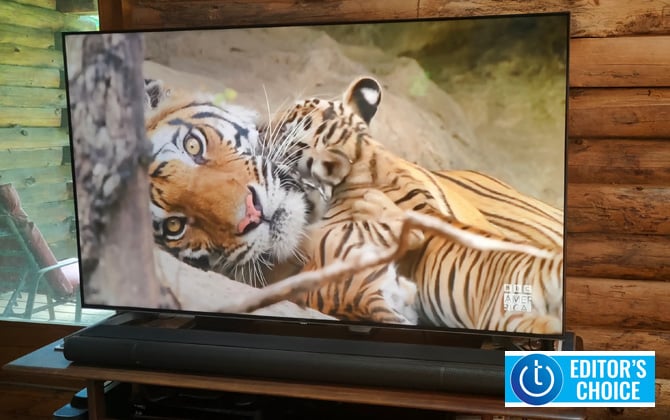
Who Should Buy
|
+ Pros |
– Cons |
|
|
The 65-inch TCL Q Class Q7 TV is for budget-constrained movie lovers, inveterate streamers, and gamers looking for a reasonably priced big screen that can handle higher variable refresh rates. In addition to its crisp, uniform picture, this TCL set also boasts enough smart TV features to keep the whole family happy, making it one of the best 4K TVs under $1,000 available today.
Setup
For a tabletop setup, the TCL Q7 uses a pair of V-shape legs about 55 inches apart for a sturdy perch. It stands about 2.9 inches high, so depending on the equipment you're using, you can slide a cable box or small sound bar under it. One design difference here compared to more expensive sets is that some people (not us!) may be tempted to fat-shame the 65-inch TCL Q7 because it's 2.8-inches thick; sets costing more ($1,500 and up) can be as thin as 1 inch if that matters to you.
Configuring a smart TV can be a trying experience, but it's a cinch getting it together on the TCL Q7 using the Google Home app on your Android or iOS phone. You simply use your smartphone to scan in the QR code on the TV's screen and then follow instructions on your phone from there. The TCL Q7 even lets you set privacy settings (so that you don't share data on your viewing habits or your location), and it connects you to your WiFi network via the phone – without asking you to dig out the password.
For making all the necessary video connections, the Q7 has 4 HDMI ports (including an eArc port for automatic synchronization with a compatible sound system and a 144-Hz port for gaming consoles). There is also an Ethernet port (in case you want a wired versus WiFi connection to your network), a coaxial cable connection (for an external HDTV antenna), a USB port, and headphone and optical audio outputs.
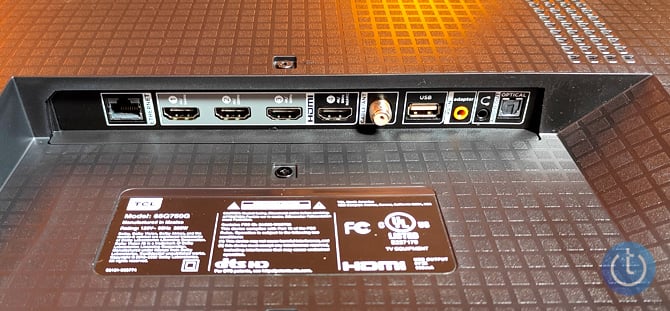
In terms of wireless connections, in addition to the requisite WiFi connection for a home network and Bluetooth support for headphones, speakers, or a keyboard, the TCL Q7 also works with Google's Chromecast to display what's on your smartphone on screen, and there's support for Apple AirPlay and Homekit.
Picture Performance
Usually, bargain 4K (3,840 by 2,160 pixel) sets use lesser LCD panels with a 60-Hz refresh rate, but TCL's Q7 uses a more advanced 120-Hz panel. That means it can produce a more solid and stable picture without resorting to excessive video processing – although all 4K sets use significant computer processing to perform such tasks as upscaling (turning an HD picture into a 4K picture) and reducing motion blur. TCL uses a processor it calls its AIPQ engine. It supports high dynamic range formats, which boost the color intensity in 4K content, including Dolby Vision IQ, HDR Pro +, and HLG for some streaming and broadcast channels.
As with all 4K TVs, the TCL Q7 has several preset picture modes. It offers Low Power (standard), Smart HDR (vivid), Sports, Movie, and Game modes. There's no Filmmaker mode, which uses settings intended to adhere to a director's original picture specifications. However, TCL's Movie mode is roughly equivalent and a good choice for those who find too much video processing flattens the picture and creates over-saturated colors.
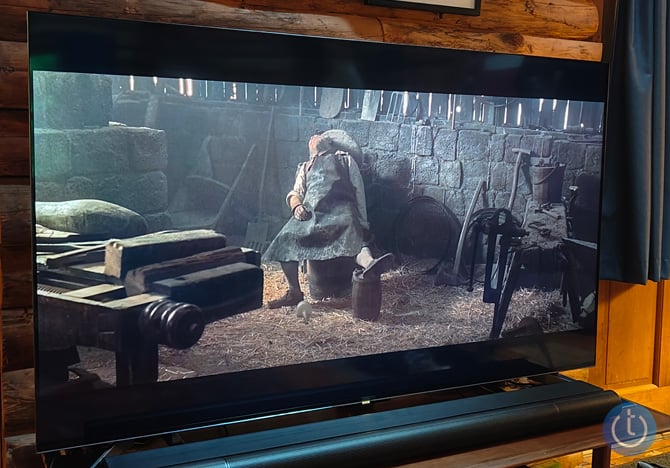
I generally stuck to Movie mode for the several weeks I tested the TV. Even this setting proved bright enough to combat rooms drenched in sunlight (I actually turned down the brightness). In fact, the TCL set's typical brightness levels were generally higher than a recently tested Samsung Neo QLED 4K Smart TV QN90C ($2,799) premium set and a more budget-conscious Hisense U6H 65-inch ULED 4K TV ($600). In spite of the bright picture, the TCL Q7 managed to deliver excellent black levels, meaning that black areas of the picture (such as letterbox bars) were truly black rather than exhibiting a gray cast. Consequently, the set delivered some excellent contrast without glossing over the finer details in a picture.
The TCL Q7 also supports the Imax Enhanced format, which delivers a taller picture and reduces the black bars at the top and bottom of the screen in letterboxed movies. Movies that support the format, such as Eternals on Disney+, were particularly mesmerizing. It can also boost image highlights and increase perceived details, all of which worked extraordinarily well in such scenes as the seaside battle against monsters in the Marvel movie.
Depending on the content, the TCL Q7 65Q750G can be truly impressive. With 4K content, the HDR10 mode was automatically engaged for Star Wars: The Rise of Skywalker. The serpent cave scene, my favorite torture test for revealing dark shadows without generating picture artifacts like halos and other distortions, was a pleasure to behold with no detectable aberrations. The desert chase scene demonstrated excellent color uniformity and transitions without any banding, while the subsequent city night scene with snow flurries was impressively crisp. Again, the black areas of the picture were deep and dark, rather than the grayish cast that some sets display.
Experimenting with different video modes revealed some interesting additional differences. Using the Smart HDR mode rather than Movie mode for Bladerunner 2049, for example, turned the orange of the replicant/farmer's helmet much brighter and more reddish. But subtle contrasts in the film noir interior scenes showed more balance and detail in Movie mode, and I could clearly make out items like dark gloves in the shadows, which were obscured in Smart HDR mode. The different modes also affected the color reproduction: in Smart HDR mode, there was a greenish tint to some highlights, while in Movie mode, there was a more yellowish (warmer) cast to whites.
The difference becomes more apparent when the video source material has to be upscaled. When using Smart HDR mode for an HD version of Badlands, for example, it boosted colors and tended to exaggerate the contrast, which made images look a little flat. However, in either mode, the TCL Q7 still did an excellent job upscaling lower-resolution programming without introducing distortions like blocky, pixelated color transitions.
To process the video or not to process the video, that is the usual question. What TCL's latest set shows is that processing has improved, so viewers will find making that decision more difficult.
Once the bête noire of LCD TVs, improvements in quantum dot displays have all but licked the problem of washed out and distorted the colors from off-axis viewing. The TCL Q7 (and the recently reviewed Samsung Neo QLED 4K Smart TV QN90C) proved that the latest generation of quantum dot TVs has substantially improved in this regard. So sit wherever you like on the couch; you'll still get a good picture.
If movies aren't your thing, and blasting aliens yourself is more your style, the TCL Q7 has some noteworthy game-oriented features. It supports AMD Freesync Premium Pro that reduces distortion in fast-paced games, like stuttering graphics, image blurring or tearing, and input latency. And with its variable frame rate and an up to 144 Hz refresh mode, inveterate gamers should be very happy with the TCL Q7 set's responsiveness.
Audio Performance
Vanishingly few TVs deliver excellent sound or can reproduce cinematic surround sound effects in your favorite action or fantasy movie. The TCL Q7 isn't an exception to this, but it does deliver enough volume to fill a large living room with sound and offers enough ways to tweak the audio to satisfy many listeners.
To support movie soundtracks, the TV has Dolby Atmos as well as DTS Virtual: X modes. There is also a 7-band equalizer and several preset audio modes, which include Dynamic, Standard, Movie, Music, and Voice. Intended to make the dialogue more audible, Voice mode targets the typical frequencies for human voices, making the overall audio sound tiny, typical for this mode in TVs. By contrast, lower bass frequencies tend to be enhanced in Movie mode, while Music mode improves both lower and higher notes.
If you're looking to disturb the neighbors (or not), you'll discover that the different audio modes produce different overall volume levels. In Dynamic mode, for example, the high notes seemed overly accentuated, and it produced limited volume, even when we raised the levels almost to the maximum (about 70 dB). By contrast, in Music mode, the high sound of cymbals was still clear, but at about 90 percent volume, it was considerably louder (about 80 dB). Movie mode expands the soundstage to make it more immersive, while the Standard sound mode pulls the audio toward the center of the screen and gives the illusion of muting the music.
Smart TV Features and Remote Control
Streaming services, which are synonymous with binge watching these days, are amply covered thanks to the built-in Google TV software. Apps from Netflix to Pandora to the Criterion Channel are covered, so virtually any service you subscribe to or watch is on the TCL Q7 TV.
There's also a screen saver where you can select artwork ranging from Monet to Vuillard or opt to use your own photos that are stored on Google. The latter feature works when you link the TV to your existing Google account, which also means the TV will tailor some screens and suggestions based on your Web browsing habits. Some owners may find it creepy, however, that the home screen on the TCL Q7 will often feature suggestions based on your online favorites, like pushing music videos from Metric because you searched for the band on YouTube 9 months ago.
Bucking the trend to make remote controls smaller, the TCL Q7's remote is about 50 percent larger than, say, a Roku remote. It makes it easier for some users to pinpoint controls, and the buttons light up in the dark. The remote control also has all the essential buttons, including a search function, a four-way dial pad for navigating menus, separate up/down volume and channel rockers, and dedicated buttons for Netflix, Amazon Prime Video, Apple TV, and YouTube.
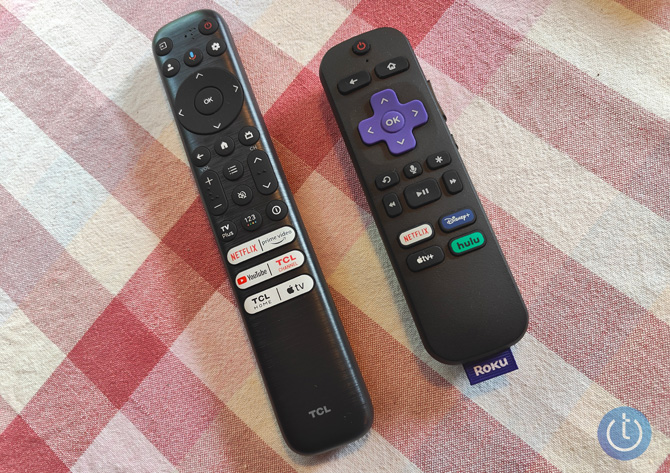
To trigger voice commands and searches, you press and hold the remote's mic button—or opt for the spoken trigger, "Hey, Google." Voice searches using Google Assistant worked well in our anecdotal tests, landing on Steely Dan's Bodhisattva on the first try. And all the usual commands work, such as setting a timer or asking, "What's the weather supposed to be like tomorrow?" and it will read out the forecast as well as show you the details on screen. You can also use your voice to switch between TV functions, such as asking it to "Go to the home screen." "Turn down the volume" also works, but going deeper into the settings menus does not. All in all, the voice option delivers a nice level of convenience with minimal misunderstandings.
Bottom Line
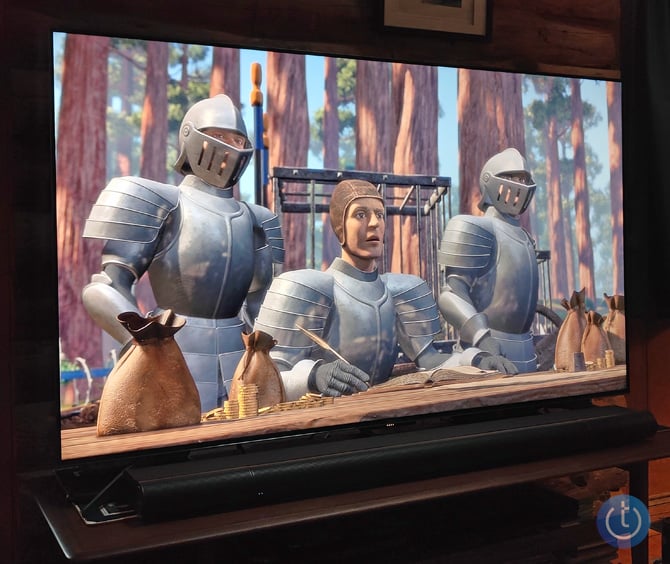
The TCL Q Class Q7 may offer the best set of features and picture quality in a bargain-priced or mid-priced 65-inch 4K TV to date. It is well-equipped for binging and movie watching and even caters to Disney+ titles that use the Imax Enhanced format. Gamers will also be pleased with the set's low latency and variable refresh rate. Are there cheaper big-screen TVs? Yes, including models like Hisense's $600 65-inch U6H 65-inch ULED 4K TV. But such sets use inferior 60-Hz LCD panels and don't have the deep black levels that the TCL Q7 boasts. So, for now, 4K TV bargain hunters won't be tempted to end their relationship with TCL.
[Image credits: John R. Quain/Techlicious]
John R. Quain has been covering science and technology for over 20 years. His work has appeared in Rolling Stone, PC Magazine, Esquire, and U.S. News & World Report. He was the on-air technology contributor to the CBS News Up to the Minute television show for 17 years and is a regular contributor to The New York Times.















